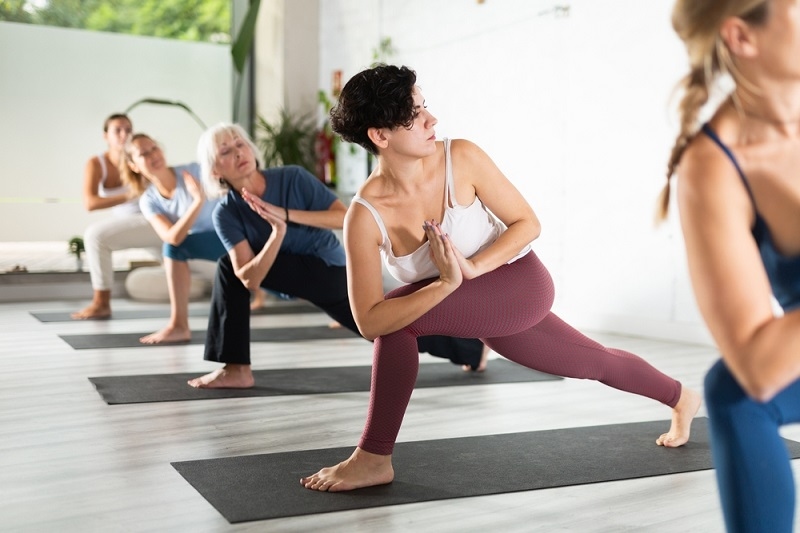
Yoga stretching or posing on the mat is not yoga alone. It is a kind of full lifestyle that finds peace among your body, mind, and spirit. Diving into the Eight Limbs of Yoga, also referred to as the Ashtanga Yoga philosophy, is one of the strongest methods of gaining greater knowledge of the yoga practice. The old values will make you live an enlightened, balanced, and fulfilled life. In this blog, you will learn what the Eight Limbs of Yoga are, why it is important, and how, simply and practically, to practice 8 Limbs of Yoga. As a novice or an expert yogi, the process of learning and practicing these limbs can entirely change the way you practice yoga and live as well.
The Eight Limbs of Yoga belong to an ancient presentation of the Yoga Sutras of Patanjali. These doctrines provide individual believers with a detailed roadmap on how to live ethically, become self-conscious, and ultimately be free spiritually.
The term Ashtanga denotes eight limbs in its Sanskrit meaning. These are not normal, physical parts of the body; these are the eight avenues, which will aid you in maturing spiritually and mentally. They are:
Understanding and applying these principles is essential if you want to move beyond the physical aspect of yoga. So, why are the Eight Limbs of Yoga important? Because they guide you to a healthier mind, body, and spirit.
The first limb, Yama, focuses on ethical rules and behavior. It teaches how to treat others and yourself with respect and kindness.
Yamas are universal values that form the moral backbone of yoga. They include:
When you start practicing Yama, your relationships become more balanced, and your mind becomes more peaceful.
The second limb, Niyama, is about taking care of yourself and your spiritual growth. These are actions and habits that improve your inner world.
There are five Niyamas that guide your behavior:
Practicing Niyama helps you become more grounded, calm, and focused.
Many people start their yoga journey with Asanas or physical poses. But in the Eight Limbs of Yoga, Asana is just one part of the whole picture.
In ancient texts, Asana means "a steady and comfortable seat." It was meant to prepare the body for meditation. Today, it includes all physical yoga poses that help keep the body strong, flexible, and healthy.
To align with the deeper meaning, focus not just on perfecting poses but on how you feel in them. Use your breath, stay present, and listen to your body. This is how Ashtanga Yoga philosophy views Asana—not just as exercise but as a spiritual practice.
After mastering physical postures, the next step is gaining control over your breath through Pranayama. It teaches you to use your breath to calm the mind and energize the body.
Pranayama includes various breathing techniques that help you manage stress, improve focus, and connect with your inner self. Examples include:
By making Pranayama a daily habit, you strengthen your connection between breath, body, and mind.
The fifth limb, Pratyahara, means withdrawing the senses from the outer world. This is where you begin to shift your attention inward, preparing for deeper mental practices.
In our modern world, distractions are everywhere—phones, social media, and noise. Practicing Pratyahara helps you disconnect from these external stimuli and focus on what truly matters.
Simple practices include closing your eyes during yoga, meditating in silence, or spending time in nature. This step helps you listen to your inner voice, which is often drowned out by the noise of daily life.
Once you’ve learned to turn inward, you can develop Dharana, which means concentration. It's about focusing the mind on one object, thought, or sound.
Dharana can be practiced in many ways, such as:
When your mind wanders, gently bring it back. This trains your attention and prepares you for deeper meditation.

The seventh limb, Dhyana, is meditation in its purest form. It’s not just about sitting quietly—it's about being fully present in the moment.
Dhyana happens when your concentration becomes uninterrupted. You’re no longer trying to meditate—you simply are meditating. This can lead to feelings of deep peace, insight, and connection to something greater than yourself.
Daily meditation, even for just 10–15 minutes, can reduce stress, improve mood, and deepen your spiritual journey.
The final limb, Samadhi, is the ultimate goal of the Eight Limbs of Yoga. It is a state of pure awareness, where the ego disappears, and you feel unity with everything.
Samadhi is not something you can force. It comes as a result of the consistent practice of all the previous limbs. In this state, you experience inner peace, joy, and spiritual fulfillment beyond words.
Many people ask, How to practice the 8 Limbs of Yoga when life is so busy? The answer is: start small and stay consistent. You don’t have to master everything at once. Begin by practicing kindness (Yama), creating daily yoga routines (Niyama), or just focusing on your breath (Pranayama).
Incorporate the limbs into your life, on and off the mat. Over time, you'll notice not just physical changes but emotional strength, mental clarity, and spiritual peace.
Eight Limbs of Yoga are a sort of guide to self-development and spiritual search. They lead you on your way by physical strength, mental focus, emotional balance, and finally through inner peace. It does not matter whether you do yoga to keep fit and healthy, to relax, or to uncover your spirituality; these eight steps can result in a permanent change. Therefore, relax, go at your own pace, and have patience in the process. The more you practice, the more you will realize how yoga is life-changing and how potent it can be to you.
This content was created by AI